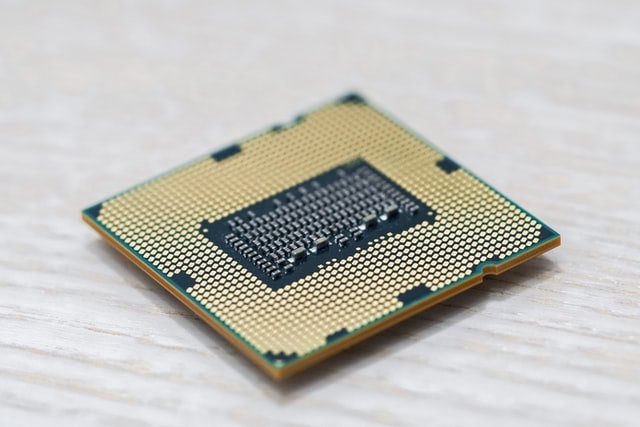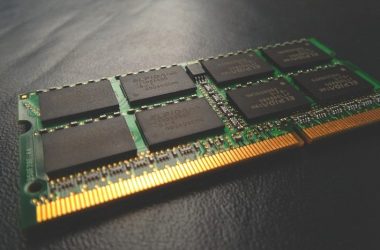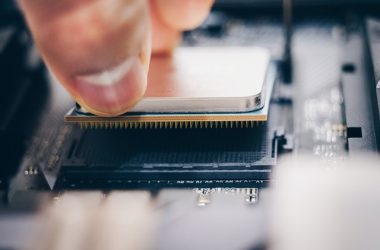We have always seen and heard those megahertz (MHz) or gigahertz (Ghz) numbers whenever we read up on PC-related reviews or view PC spec sheets.
Usually the higher, the better, but sometimes, that is not always the case. It gets even more confusing when CPU design architecture gets thrown around, because the numbers listed may not always be the ones that you see when you finally witness the PC in action.
… oh and also what to realistically expect out of this specification.
Table of Contents
Creating Openings for More Computations
CPU clock speed or frequency is basically the number of process cycles that the component can do per second. In this case, a single hertz means a single “slice of timing” where it can do anything, be it part of an instruction, a single calculation, or a series of binary value switching. As such, it is far more of a numerical figure for instruction or process (things to do) openings, rather than a technical metric of how the component is.
A specific instruction, for example, can eat up several clock cycles, so frequency alone would not have any bearing on the actual number of processes completed for that particular “slice(s) of time”.
That being said, we still usually call it CPU clock speed, because higher frequencies generally mean bigger capacities to do more processes and instructions per unit of time. This is why similar, even if at a limited capacity, similar generation CPUs would have a direct difference in performance when one has a higher rated (boost) frequency than the other.
This is also why sometimes CPUs with lower cores can even match or beat other competing processors simply due to vastly higher clock speeds.
But… Higher Doesn’t Always Mean Better
While reading frequency values is very important in gauging the predicted performance level of a CPU, the higher priority always goes to core and thread count, especially when it comes to production workloads.
For example, in gaming, a Ryzen 3 3300X can completely leave a Ryzen 7 1700 in the dust with its advanced Zen 2 architecture and more than 600Mhz difference in base boost blocks. However, the Ryzen 7 1700 is still far superior in applications such as video rendering and data compression simply because it has more cores to split entire loads, rather than just queueing them up in a single processing cycle line.
Another massively important factor why CPU clock speed can’t be directly attributed to direct performance metrics alone is the L3 cache. A cache, in CPU terms, is a “stored memory” unit that acts as a buffer to the instructions and processes being calculated. Computers today are well-integrated multitasking machines.
Without a good amount of cache, even with higher capacity for instructions, the CPU, sooner or later, will be overburdened with work. This will then appear as a comparative slowdown when compared to other CPUs with higher cores/threads, bigger L3 cache, and presumably more advanced design architectures.
Quirks and Common Features Related to CPU Clock Speed
Aside from the measurements related to CPU frequency itself, here are a couple more related things that you need to learn:
- Turbo or Boost Frequency/Clock Speed – CPUs today perform work using a dynamic system of adjusting frequency depending on numerous or how heavy the task is at hand. The maximum value for this is the boost frequency. Take note that Intel usually displays single-core boost clocks in its database, so what is advertised may not be the visible all-core boost value (For example, the Core i5-9400F is advertised as 4.2Ghz, but its actual all-core boost clock is 3.9 Ghz)
- Overclocking – setting the CPU in a way that exceeds the factor-set limits of its clock speed. Overclocking requires the correct balance of frequency setting, voltage setting, and temperature control, along with silicon lottery, in order to apply one properly on an applicable CPU. Setting an overclock overrides any boost feature of your processor, and it will now only operate (during maximized use) at the frequency that you overclock it. This feature is available to all Ryzen CPUs, and Intel CPUs with a letter ‘K’ after their name, when using X and Z motherboards, respectively.
- Underclocking/Downclocking – the complete reverse of overclocking. It sounds useless at a glance, but it is usually done for energy efficiency (overclocking is a very power-hungry operation), hardware preservation, or standby configuration purposes.
- Thermal Throttling – is the automated action of lowering down a CPU’s clock speed to keep the processor from going too far or too long past its Tj Max (maximum rated acceptable operating temperatures). Remember, keeping CPU temperatures stable is done not just from a component longevity standpoint, but also for maintaining optimal CPU clock speeds (and therefore optimal performance).
Gauging Its Effect on Real-World Performance
As concluded earlier, clock speeds are always better considered when combining the entire performance package of a CPU. As a rule of thumb, CPU frequency is usually measured in actual benchmark scenarios with the following things in mind:
- A couple of additional Mhz wouldn’t make your gaming framerates jump. At most, you should only expect an optimistic maximum of about 10% (or about 3 ti 5% realistically) boost in maximum FPS for a particular CPU-intensive game.
- That being said, the same clock speed increase does add quite significantly to minimum framerates, which can considerably help make a game feel more stable.
- Because overclocking overrides boosting, the minimum amount of (stable) OC you should aim for is at least 300Mhz above the maximum all-core turbo frequency. Why? Refer to number 1.
- If the CPU is kept thermally throttled without rest, it will start cycling around the lowest and highest clocks as the temperature fluctuates. This operation is not harmless by itself, but is certainly not the best way to make your processor (and your motherboard’s VRM) do work.
- In most standard usage scenarios, the base turbo frequency of a sufficiently modern CPU will be enough to make it perform as intended. So no, your Core i5-10400F isn’t really missing out on huge performance gains or future-proofing compared to the Ryzen 5 3600 just because it can’t be overclocked.
- Already mentioned earlier, but on most CPU resource intensive-tasks that are not gaming-related, the better spec to look at is cores and threads, not clock speed. Though, there are exceptions, of course, such as AutoCAD. This software mainly uses the primary first-core of a CPU, so higher clock speeds and a more advanced design architecture would definitely have a bigger impact than just having more cores when using it.





